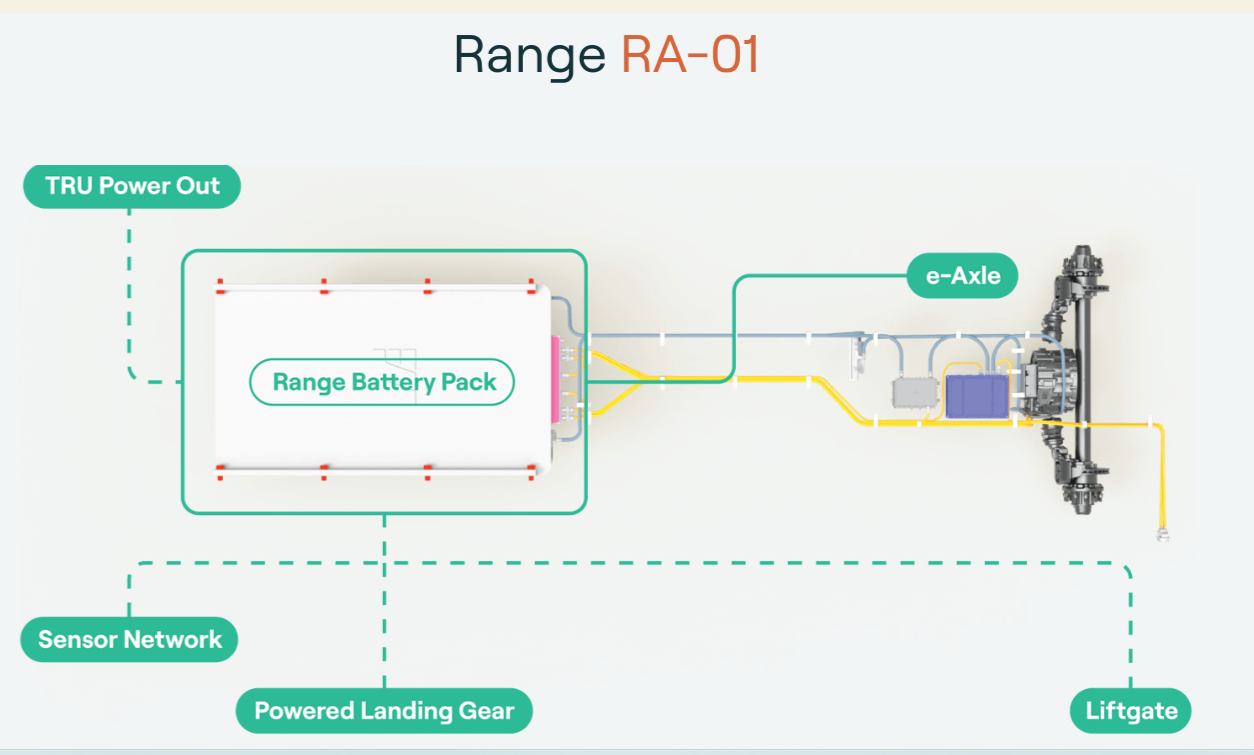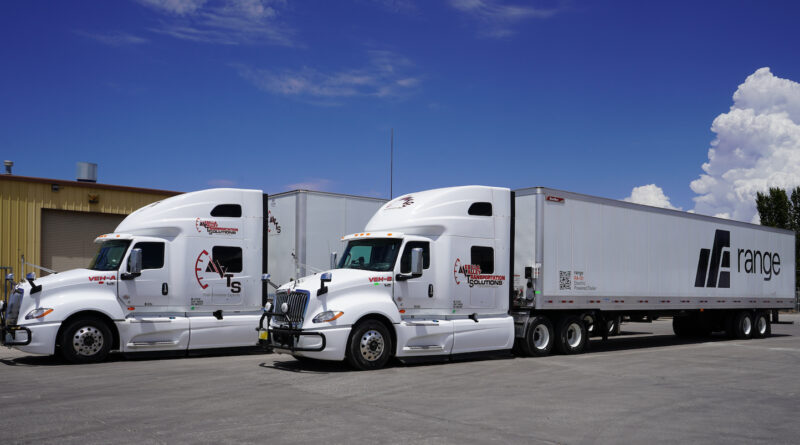Range Energy Electrifies The Semi Trailer
All sorts of vehicles are getting electrified there days — travel trailers, fork lifts, construction equipment, boats, even golf carts. So it should come as no surprise that the semi trailer is also getting the battery electric treatment. Range Energy has just completed a testing of its electric semi trailers by Mesilla Valley Transportation, a company that provides breakthrough testing, design, and development services for the trucking industry.
The Range Energy semi trailer fits an innovative e-axle, battery pack, and smart pin to reduce the load on the tractor unit. In the testing on a 25.5 mile long urban/highway loop at approximately 59,000 lbs. GVW and a top speed of 60 mph across multiple scenarios, including stop and go and steady speed portions, the company’s technology was shown to lower fuel usage by 36.9 percent, which is equivalent to increasing the fuel economy of a standard tractor by 3.25 miles per gallon (72.4 L/100 km).
In an industry that tracks average fuel economy to the tenth of a mile a gallon, that is a huge increase. Not only does better fuel economy mean lower operating costs, it also means lower emissions for every mile driven — an important consideration for fleet operators.
“Achieving 36.3 percent efficiency improvements proves to the trucking industry how important and overlooked trailers are to enhancing efficiency and lowering emissions for our industry. Range is the first electrification platform to actually prove this level of efficiency benefit, and we anticipate these numbers will only improve as we begin testing with production quality parts versus prototype components,” said Ali Javidan, CEO and Founder of Range Energy in a press release. “We’re essentially matching the fuel economy you’d get if you were bobtailing your tractor,” he told The New Warehouse podcast. Bobtailing is trucker talk for driving a tractor without a trailer attached.
“We were impressed with the Range trailer. Whether a fleet wants to reduce fuel usage or increase BEV range, this system provides unique opportunities over a traditional trailer – and by a large amount when considering it achieved 36.3% fuel savings. Our drivers also liked the Range trailer; reporting it pulled easier and felt lighter. Naturally, there is a trade-off with electric charging and additional weight so it may not suit every fleet but for those considering the EV direction, Range is worth talking to,” `said Daryl Bear, COO of Mesilla Valley Transportation Solutions.
Range Energy E-Trailer Targets 40% Efficiency Boost

Range Energy told New Atlas its first trailers are expected to achieve a 40% efficiency boost over a range of 200 miles (322 km). “In a highly loaded city drive cycle, that number’s actually 48%,” says Javidan. “On a mixed highway and city cycle, it’s 41%, and if we’re looking at just over the road long-haul trucking, it’s a little bit lower than that.”
That 40% efficiency boost is precisely the same amount expected by Germany’s Trailer Dynamics, which is producing a similar battery powered trailer with a 300 kWh LFP battery supplied by CATL. DB Schenker, one of Europe’s largest trucking companies has ordered 2000 battery powered units from Trailer Dynamics.
Even beyond that 200 mile range, once the battery is completely depleted, Range Energy still expects about a 10-15% efficiency boost over a regular trailer for the rest of the trip simply because of the energy it can capture and release through regenerative braking. “It’s still a trailer, we default as a trailer,” Javidan said. “One of the analogies the guys use is that we’re like an escalator. We help you get up to the top, but if we fail, we’re still stairs. Worst case scenario, if all the Silicon Valley bullsh#t fails, it’s still a trailer.”
Other Range Energy Benefits
There are other benefits. Drivers enjoy the lightness and safety factor of driving with the powered trailer, whose motor is capable of supplying up to 14,000 Nm (10325 lb-ft) of torque. The e-axle is controlled by a smart pin — the connection to the tractor. It looks like any other pin but senses acceleration and deceleration. With that information, it tells the e-axle how much power to add or regenerative braking to apply.
In other words, it substitutes for the driver’s right foot in an electric car, modulating power and braking as needed. The fact that it reacts to engine braking just as much as it does to the brake pedal means that it’s more relaxing to drive down a hill than a conventional cargo trailer, the company says. The RA-01 is designed to work seamlessly with all conventional tractor hitches and with all future electric and hydrogen tractors.
The Range RA-01 trailer has a 200 kWh battery that can be charged at either end of the journey. The process takes 10.5 hours using a 16 kW AC connection or as little as 45 minutes using a 350 kW DC fast charger. That battery can operate a powered tailgate and also powers the landing gear that supports the front of the trailer when it is not connected to a tractor.
Shopping Cart Mode
That landing gear makes possible another feature that is unique in the industry — shopping cart mode. That feature allows the trailer to be moved around like a hand trolley without being connected to a tractor with the e-axle doing all the work. At some point, moving a Range RA-01 trailer might even be done autonomously, eliminating the cost and operating expense of donkey tractors at freight terminals. Last time we checked, those tractors aren’t being given away for free.
There is one other important benefit to the RA-01. The battery can power an air conditioning unit for cargoes that have to be kept cold. Traditionally those cooling units are diesel powered, so there are even more emissions reductions available if they can be powered by electricity instead of diesel fuel.
“We are beginning to deploy these with our first customers this year, and the goal here is to start scale production in 2024, probably late 2024,” says Javidan. “We’ll start seeing these things in volume on the roadways, I’d say, in early 2025.”
New Atlas says there is no information yet on the price of the trailers, but given the epic amounts of fuel a typical semi burns in a year, the business case over time will look pretty appealing. “This seems to us a great way to begin soft-decarbonizing land transport operations without needing big infrastructure changes or the retirement of existing trucks.”
Hat tip to Dan Allard.
Have a tip for CleanTechnica? Want to advertise? Want to suggest a guest for our CleanTech Talk podcast? Contact us here.
Latest CleanTechnica.TV Video

CleanTechnica uses affiliate links. See our policy here.

